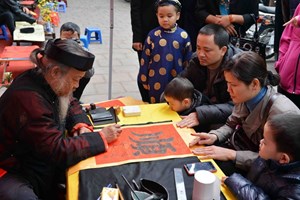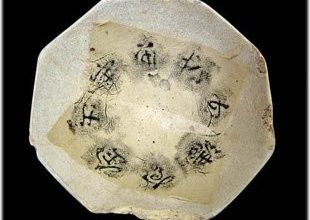Reconstructing various traditional ceremonies in the Kitchen Gods (Táo quân) Programme seeing off the old year and welcoming the new year at Thăng Long Imperial Citadel
On the morning of 26 January 2019, at the Dragon Steps of the Kính Thiên Palace Foundation (Thăng Long Imperial Citadel), the Thăng Long – Hà Nội Heritage Conservation Centre worked with the Association for the Preservation of the Thăng Long Cultural Heritage and a number of other units to organize the Kitchen Gods Tết Programme to see of 2018 and welcome 2019. This is the first in a series of events to take place at the Imperial Citadel of Thăng Long on the occasion of the forthcoming Year of the Pig. The goal of these programmes is one of safeguarding, preserving and promoting the good cultural traditions of the nation while bringing visitors interesting experiences of the customs and cultural practices of the Vietnamese people during spring time. Today’s ceremony was also attended by more than 100 overseas Vietnamese representing the diasporic community who, despite living in distant parts of the world, always look to the ancestral land and the Spring in Vietnam.

Vietnamese people from overseas offering incense at the Dragon Steps of Kính Thiên Palace
In the Vietnamese psyche, Tết is a sacred holiday because it is time to welcome the new spring and pay tribute to ancestors. The Kitchen Gods Ceremony (Táo Quân), which takes place one week shy of the New Year’s Eve, is a long-established custom of the Vietnamese people practiced annually and heralds the celebrations of Tết carrying wishes of a new year of abundance, peace and happiness.
In the ancient palaces of Thăng Long, Tết rituals and ceremonies were solemnly and seriously conducted to reflect clearly the message of “seeing off the old and ushering in the new spring”. These include for example the calendar-giving ceremony (ban sóc) (on the 24th day of the last lunar month), the spring buffalo offering ceremony (1st lunar term prior to Tết), the ablution of seals ceremony (phất thức), and the erection of New Year’s Tree cây nêu, also known as thướng tiêu.
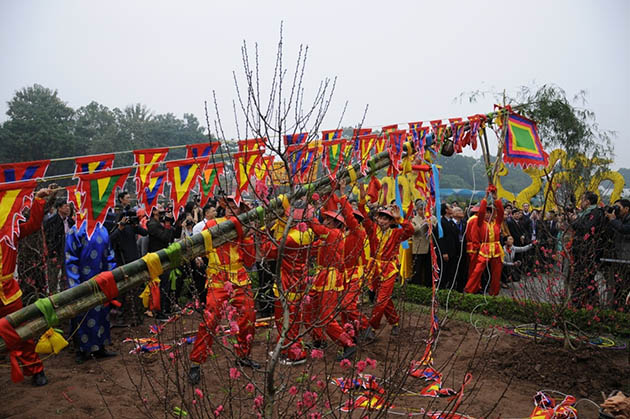
The New Year’s Tree (cây nêu), which heralds the coming of Tết and Spring, is being put up near the Main Gate (Đoan Môn) of Thăng Long Imperial Citadel.
The calendar giving ceremony (ban sóc) was an important event in the royal court because since time out of mind, calendar has always played an extremely important role in the belief and daily life of Asian peoples. To royal courts, the calendar was deemed heaven’s dictate for the human beings to carry out farming and rites. The king was the heaven’s son, and ruled the earth on heaven’s behalf. The king should therefore receive calendar from the supreme being and grant to his subjects. The calculation for annual calendar making was determined to be the responsibility of the Director of the Imperial Observatory (Tư thiên giám) who would then entrust the Secretariat Supervisor (Trung thư giám) to write down and inscribe the content. The calendar-giving ceremony was conducted towards the end of the last lunar month on the royal yard of Đan Trì. During the ceremony, the mandarins all donned their best official attires for most serious attendance. The Director of the Imperial Observatory presented the royal calendar for the new year to the king who then granted it to the whole country.
The seal ablution ceremony (phất thức) involved the cleaning of the regal seal, thereby signifying a temporary cease to the bureaucratic processes of the court in preparation of the new year, and under the Nguyễn Dynasty, this ceremony was normally carried out on the 20th day of the 12th lunar month. On this day, in the regal presence of the king at the Cần Chánh Palace, civil and military mandarins of the first or second ranks together with other court members would put on their official outfits and take part in the ceremony, using perfumed water to wash the seals and drying them with red sheets of cloth. Upon completion, the seals would be put under lock and key again, bearing the two characters “hoàng phong”, hence its alternative name phong ấn. After the process finished, the king and his courtiers would suspend the use of seals temporarily until the beginning of the new year when another ceremony would be held at propitious time to open the seals again. In Thăng Long, the phong ấn ceremony was not recorded with as much detail as the one held under the Nguyễn Dynasty, but it was certainly very common under the Lê, evidenced in the account of foreign merchants like Samuel Baron who spent time in Thăng Long and saw the Vietnamese celebrate Tết from the 25th day of the 12th lunar month. For exactly one month, the seal lay disused in a casket.
The thướng tiêu, or erection of the New Year’s Tree cây nêu, took place around one week before the eve. This traditional practice in the lunar new year of the Vietnamese people was a combination of Buddhist and popular beliefs and its aim was to dispel the evil and pray for good luck. The cây nêu was erected in different parts of the royal court, including in front of the main palace and the shrines. The towering cây nêu also served to herald the advent of the new spring. Only after the new year tree cây nêu of the royal family had been erected did the commoners put up one for their own houses.
The Kitchen Gods, which are known locally as “Táo quân”, takes place on the 23rd day of the 12th lunar month. This is a long-established folk tradition that has survived to modernity. There is no written record of how this ceremony was conducted inside the royal court, but one thing for certain is that the Lê rulers made it a rule that the votive offerings in Kitchen Gods ceremony include 12 truncated cones of rice flour, a pig, yellow paper, silver paper, betel leaves and areca nuts, incense, and oil.
The examination and recreation of traditional Tết-specific ceremonies in the royal court and in ordinary life at Thăng Long Imperial Citadel has contributed to the safeguarding of Vietnam’s traditional cultural values. This is all the more remarkable given the heritage space and spring time that these ceremonies take place in.
Photos of the erection of cây nêu ceremony
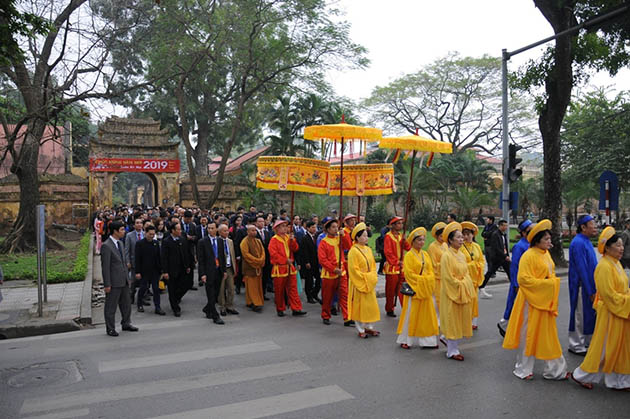
Carp procession moving across the road to the 18 Hoàng Diệu Archaeological Site.
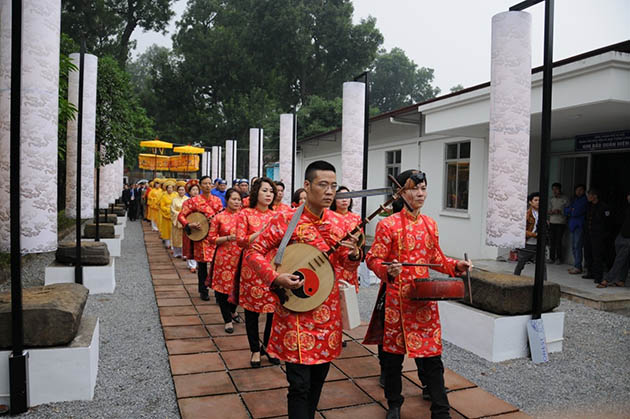
Team of musicians.

The release of carps into the ancient river within Thăng Long Imperial Citadel heritage site.
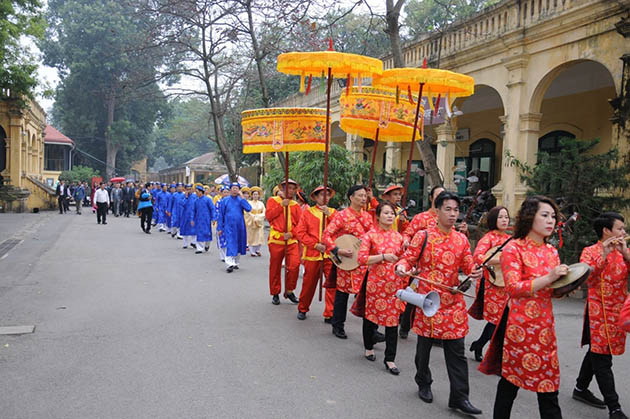
The procession moving towards the main gate Đoan Môn for the erection of new year’s tree.

The backyard of Đoan Môn in splendid decoration with the Thăng Long Dragon and flower blossoms.
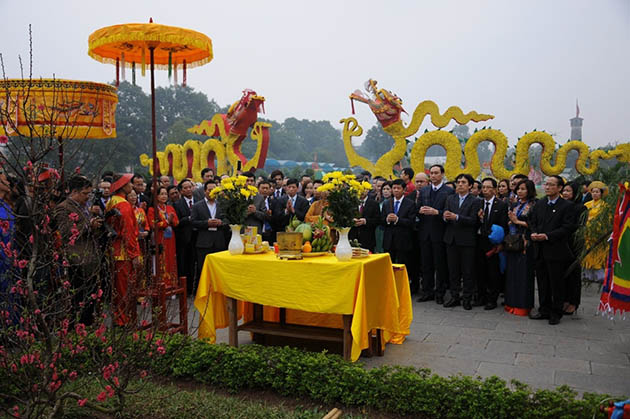
Preparatory steps before the erection of cây nêu.

Cây nêu slowly being put up in front of the ancient main gate of Đoan Môn.
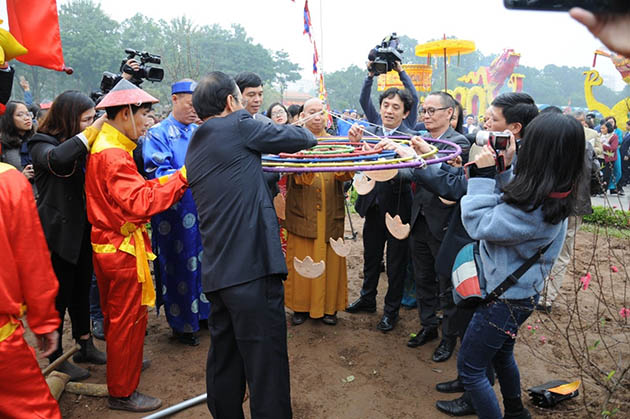
Cloud-shaped terracotta gongs being hung in expectation of good luck and peacefulness.
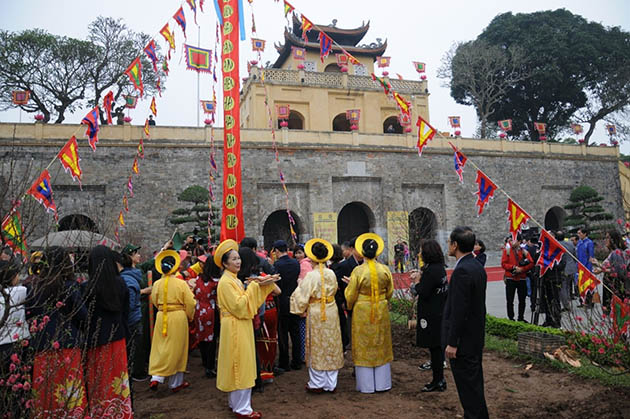
Praying for a new year of fine weather and abundance.
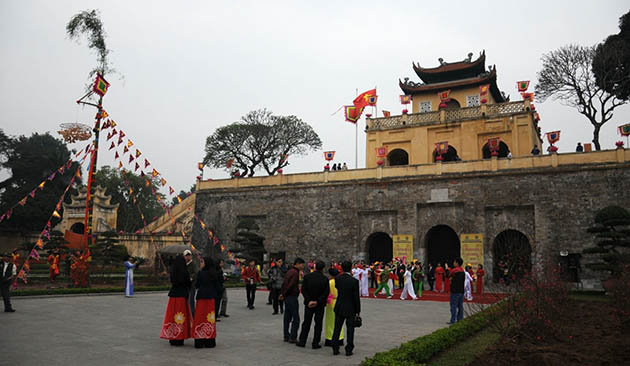
The cây nêu heralding the coming of the spring erected in a space full of colors around the Đoan Môn site.
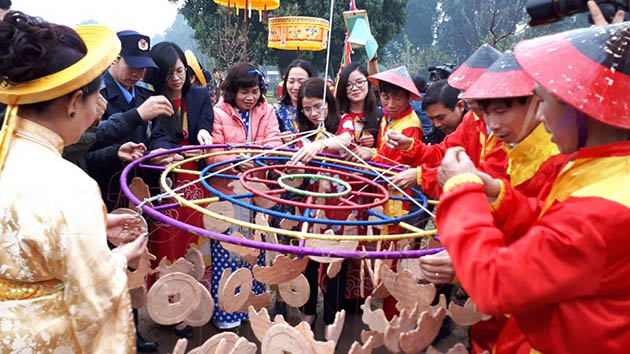
A new joyful spring has come to everyone
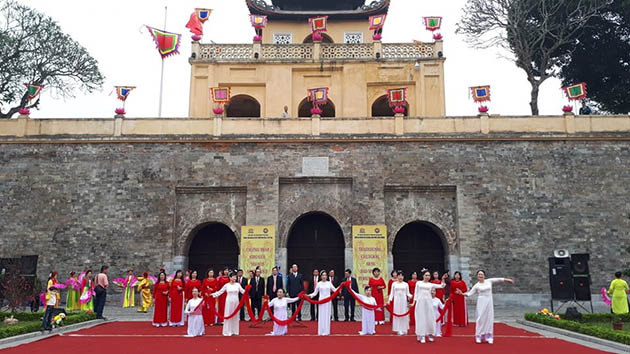
A musical performance held after the erection of cây nêu.
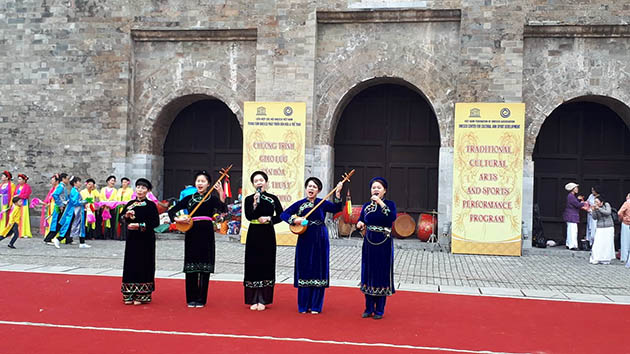
Then Singing.
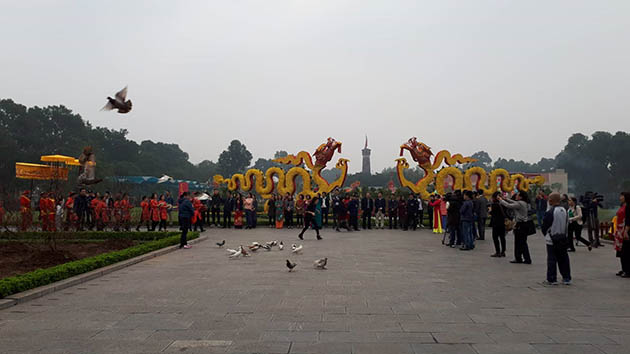
A new peaceful spring.

The beautiful spring space at Thăng Long Imperial Citadel.
Thăng Long – Hà Nội Heritage Conservation Centre



